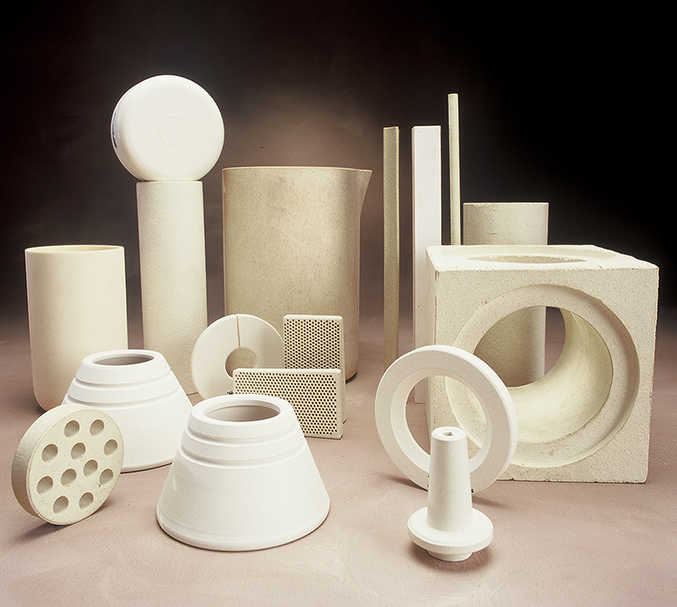Mullite Ceramic - Introduction & Material Parameters |
|
|
Mullite ceramic is a high-performance ceramic material with mullite as the main crystal phase. Mullite is a naturally occurring aluminum silicate mineral with a chemical formula of 3Al₂O₃·2SiO₂ (Al₆Si₂O₁₃), but synthetic mullite can optimize performance by adjusting the ratio of Al₂O₃ to SiO₂ (such as 2:1 or higher). It was first named in 1924 and has become a core material in the field of refractory materials and advanced ceramics due to its excellent stability at high temperatures.CompositionThe main components of Mullite are aluminum oxide (Al₂O₃) and silicon dioxide (SiO₂), with a typical molar ratio of 3:2, but artificial synthesis can be extended to 2:1 or even higher Al₂O₃ content.
Main crystal phase: Mullite (3Al₂O₃·2SiO₂), alumina (Al₂O₃) content is between 71.8% and 77.3%, and silicon dioxide (SiO₂) content is between 22.7% and 28.2%.
Impurities and additives:
· Natural raw materials may contain impurities such as TiO₂, Fe₂O₃, CaO, MgO, etc.
· Grain refinement and performance regulation can be achieved by adding oxides such as MgO and Y₂O₃ during artificial synthesis.
Microstructure: The crystal is needle-shaped or columnar, and the grain size can be controlled by sintering temperature (1600-1800℃) and insulation time. The porosity is less than 1% and the density is high. |
 |
Ceramics quality Ceramics Process Ceramice after-sale Customer witness Patent Certificate
Ceramic Flange Ceramic BushingS Ceramic PlungerS Ceramic Pump ValveS